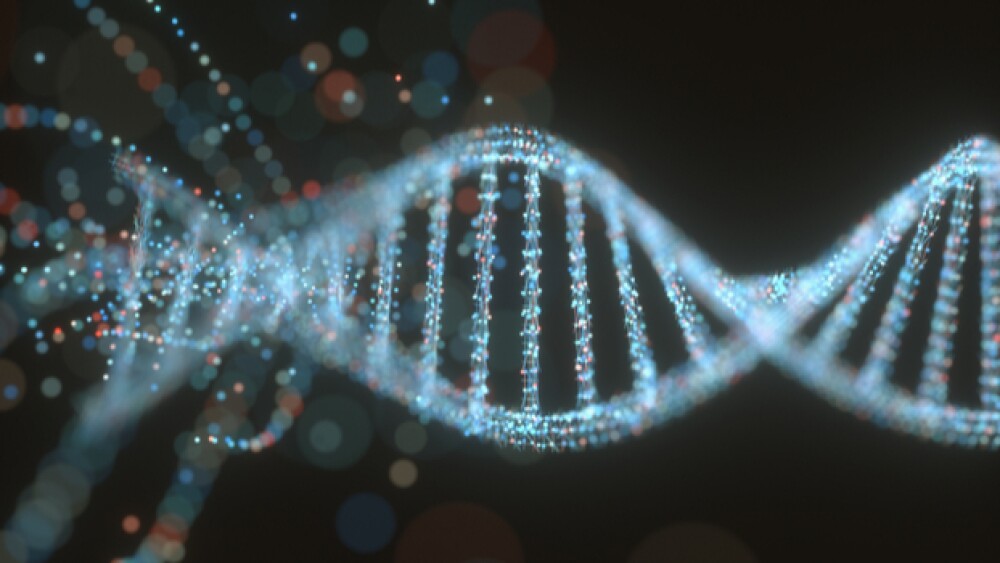It seems like every time we turned around this year, there was an exciting or—on a more visceral level, “Hey, that’s cool!” science story. Here’s a look at the top 9 really cool life science discoveries of the year, from outer space, to peanut allergies, to tortoise genomes.
It seems like every time we turned around this year, there was an exciting or—on a more visceral level, “Hey, that’s cool!” science story. Really, as much as it was a gimmick, Elon Musk sending a red Tesla Roadster with a dummy driver into space was a lot of fun.
Here’s a look at the top 9 really cool life science discoveries of the year.
#1. NASA astronaut Scott Kelly and his identical twin brother, Mark, became a year-long experiment in how space affects the human body. Scott spent a year on the international space station, while Mark spent the year on Earth. Among the many things they found, Scott was two inches taller after the year in space—gravity is merciless, apparently. But one of the more intriguing changes had to do with gene expression. Although Scott’s height returned to “normal,” the changes to his gene expression may never change all the way back, having been affected by the stresses of living in space. The researchers believe as much as 7 percent of Scott’s DNA has changed permanently.
#2. Aimmune Therapeutics, headquartered in Brisbane, Calif., published the results of a successful Phase III PALISADE clinical trial of ARA101 that desensitizes patients with peanut allergies. It’s estimated that 2.5 percent of all children in the U.S. might have a peanut allergy, and the incidence of peanut allergies in children has risen 21 percent since 2010. Aimmune’s AR101 is 12 percent defatted peanut flour. Overall, the compound did a good job of helping desensitize the patients, ages 4 through 17, to peanut protein, although there were adverse side effects in more than 95 percent of patients, almost all mild or moderate. However, 2.4 percent had severe adverse events and 1.1 percent experienced serious adverse events. Two patients required the use of epinephrine due to severe adverse events.
#3. The U.S. Food and Drug Administration (FDA) approved Eli Lilly’s Emgality (galcanezumab-gnlm) for migraine prevention. Lilly was lagging behind Amgen and Novartis’ Aimovig (erenumab-aooe) and Teva Pharmaceutical’s Ajovy (fremanezumab) in this market. They are all a new class of drug that blocks the calcitonin gene-related peptide receptor (CGRP-R).
#4. Loxo Oncology and Bayer’s Vitrakvi (larotrectinib), a first-of-its-kind TRK inhibitor, received FDA approval for solid tumors that have a neurotrophic receptor tyrosine kinase (NTRK) gene fusion. FDA Commissioner Scott Gottlieb stated, “This new site-agnostic oncology therapy isn’t specific to a cancer arising in a particular body organ, such as breast or colon cancer. Its approval reflects advances in the use of biomarkers to guide drug development and the more targeted delivery of medicine.”
#5. Researchers at The Chinese Academy of Sciences Institute of Neuroscience cloned monkeys using essentially the same techniques used to clone Dolly the sheep about 20 years ago. Cloning primates is extraordinarily difficult, requiring 127 eggs to produce two live macaques. Although it does break down a technical barrier to cloning human beings, the scientists say they don’t intend to try cloning people.
#6. CRISPR babies. In what was both a big scientific story and a big story in general, He Jiankui, a researcher in Shenzhen, China, used CRISPR-Cas9 gene editing to alter the DNA of embryos for seven couples. All the males in the couples had under-control HIV infections. Jiankui used the technique to alter the CCR5 gene, which is purported to provide some immunity to HIV infection. A set of twins have been born and reportedly there is another pregnancy. This news was met by global condemnation that has launched investigations by the Chinese government, the U.S. National Institutes of Health (NIH), Rice University, where He Jiankui’s associate, Michael Deem works—Deem reportedly helped in the procedures—and the Southern University of Science and Technology of China, to which He Jiankui is affiliated.
#7. Researchers at Flinders University in Australia, working with mice, removed a single gene known as RCAN1 and then fed them a variety of diets, including a high-fat diet. The mice did not gain weight, even after dramatically overeating high-fat foods over several weeks. The research was published in the journal EMBO Reports.
“We know a lot of people struggle to lose weight or even control their weight for a number of different reasons,” stated Damien Keating, who led the international research team. “The findings in this study could mean developing a pill which would target the function of RCAN1 and may result in weight loss.”
There are two types of fat in the body, white and brown. Brown fat actually burns energy; white fat stores energy. Blocking RCAN1 helped turn white fat into the healthier brown fat.
#8. Researchers with Yale University and the University of Oviedo in Spain sequenced the entire genome of Lonesome George, the last of the Pinta Island tortoises of the Galapagos. The last of his kind, George was more than one hundred years old.
Researchers published an article in the journal Nature Ecology & Evolution that described preliminary findings of gene variants in George associated with a strong immune system, efficient DNA repair and cancer resistance.
The researchers also believe their research can help understand the evolution of the giant tortoises. After all, they have quite a pedigree in that area—they were key to inspiring Charles Darwin’s “Origin of Species” and the theory of evolution and natural selection when he noted that the tortoises’ shell shapes were adaptations to their environments.
Adalgisa “Gisella” Caccone, a researcher at Yale University, who had been working for years on the tortoises, teamed up with Carlos Lopez-Otin, a professor at the University of Oviedo in Spain whose research focused on cancer and aging in humans. Together, with a larger team, they sequenced Lonesome George’s entire genome, as well as that of an Aldabra giant tortoise from the Seychelles, who are rumored to live up to 250 years (well, at least one did).
#9. Researchers have hunted for years to find a commonality across all cancers, a so-called “silver bullet” that ties them all together. Researchers from the University of Queensland’s Australian Institute for Bioengineering and Nanotechnology (AIBN) have identified a nano-scaled DNA signature that seems to be common to all cancers. This has the potential to be used as an early cancer detection test, what is often called a liquid biopsy, and if the research pans out, could open up new pathways for universal cancer treatments.
The scientists looked at epigenetic patterns in cancer cell genomes and in healthy cells, looking specifically for methyl groups. Methyl groups, essentially a carbon atom with three hydrogen atoms attached to it, play a role in switching genes on and off based on a number of factors, such as whether they’re inherited from the mother or the father, various environmental cues, and, as some research is indicating, trauma and other stressors.
Methyl groups are spread across the genome, but the AIBN team found that cancer cells’ genomes often lack methyl groups except for “intense clusters of methyl groups at very specific locations.” The researchers dubbed this the cancer “methylscape,” and they observed it in every type of breast cancer they studied, as well as in other cancer types, including prostate cancer, colorectal cancer and lymphoma.
“Virtually every piece of cancer DNA we examined had this highly predictable pattern,” stated Trau. “It seems to be a general feature for all cancer. It’s a startling discovery.”
Click here to see thousands of life science jobs on BioSpace’s job board.





